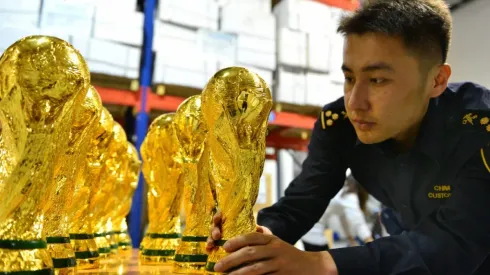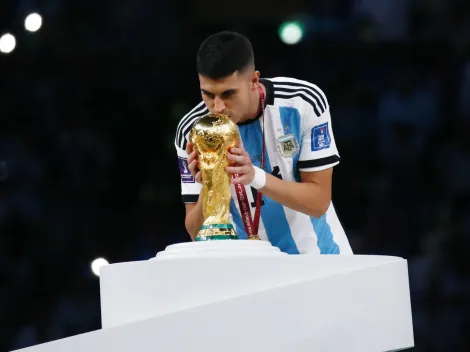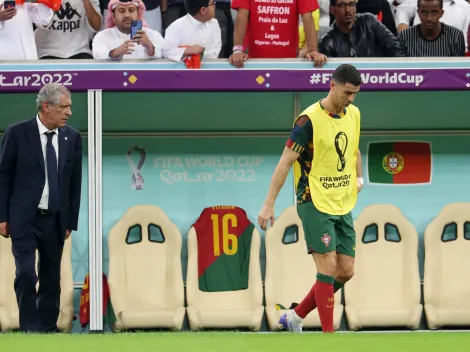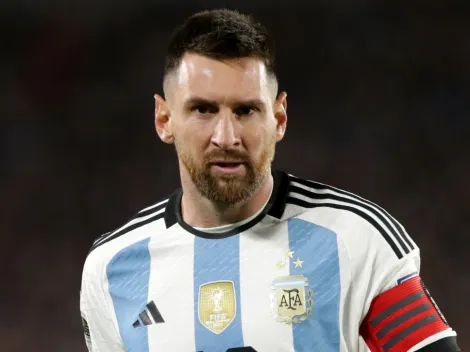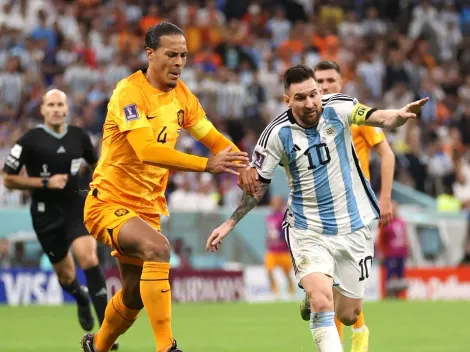The history of soccer could not be imagined without FIFA‘s main event. Since it was born in 1930, and to bedisputed in Qatar 2022, the eyesof every National Team on the globe are set on the World Cup Trophy, making it the most coveted statuette in the sports universe. Could it be possible that this treasure could have been stolen?Shockingly, yes.
The FIFA World Cup Trophy usually makes a tour all around the globe to approach it to the fans who revere it. As the soccer main event changes its location for each of the editions held, its statuette has not a steady life.
It is exactly this kind of context that triggers the risk of facing a security contingency related to the FIFA World Cup Trophy. Nowadays, strong measures are taken to guarantee and protect that the laurel is just going to be touched by authorized hands, however, it has not always been like this.
How many times has the FIFA World Cup Trophy been stolen?
It has been twice the occasions that the wrong hands have touched and taken the most precious treasure of the soccer community. Fortunately for the World Cup edition to be held in Qatar 2022, these dark episodes occurred many years ago. The current security measures for everything related to FIFA’s main tournament are even exaggerated.
The very first time the FIFA World Cupaward was taken away from its caregivers was in 1966, exactly in the main year it was going to be disputed in England. Then, the second one happened in 1983 in Brazil, however, this one did not involve the statuette to be used to award the 1986 World Cup winner.
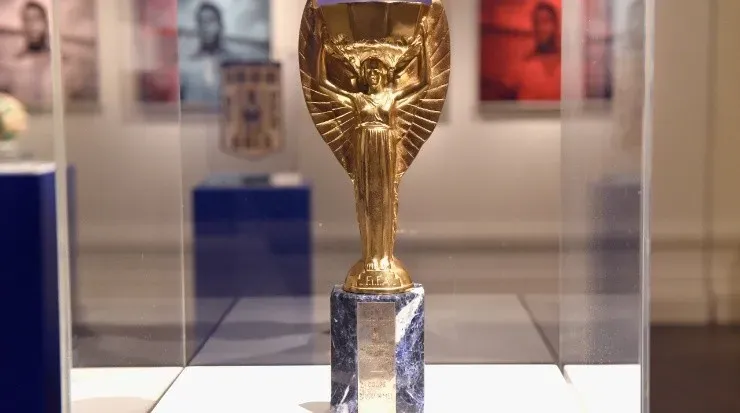
The Jules Rimet Trophy: the two-time stolen FIFA World Cup award. (Mary Turner/Getty Images for Halcyon Gallery)
The comical first robbery of the World Cup
The first theft suffered by the World Cup statuette was in January 1966 in London. For nowadays lifestyle, the trophy theft plan may sound naïve: just to take it away from thedisplay case in which it was being exhibited.
The Trophy was taken to the host country of the ninth World Cup edition and was exhibited in the Central Hall Westminster. The only guard that was protecting it took a quick break and left his place to search for some coffee. Nevertheless, when he came back the statuette had disappeared.
London’s police started the research of the laurel but the hero was not meant to be a human: a dog named Pickles found the Trophy while he was taken out by David Corbett, his owner, for a walk. During the tour, Picklesbegan to snoop among the bushes of a private garden.

Pickles, the World Cup Trophy rescue hero in 1966. (DPA/picture alliance via Getty Images)
Corbett approached his dog as he noticedthat it had found a package covered with newspaper. When he opened it, he found out that it was the coveted FIFA World Cup Trophy. Pickles owner received an important economic reward for his invaluable help to solve the case.
Years later, a couple of facts about this robbery came to light. The BritishFootball Association has secretly ordered the elaboration of a replica of the trophy in case the date of the tournament arrived and the original statuettecould not be found.
The second fact is that in 2018, the Daily Mirrorpublished a story that exposed the identity of the thief: his name wasSidney Cugullene asmall-time thief. After stealing the FIFA World Cup Trophy, Cugullene got scared because of the news coverage of the robbery and decided to throw away his loot, but always told the story to its closer ones with pride as he was “the very first British to lift the World Cup“.

The World Cup Trophy was stolen from this display. (Keystone/Hulton Archive/Getty Images)
The World Cup’s second theft: the prequel of “Money Heist“?
FIFA regulations hadestablished that the National Team capable of winning three times the World Cup could own the Trophyas a special reward. Brazil achieved the feat in 1958, 1962, and 1970 editions, so it received the accolade.
Then, the Jules Rimet Trophy was exhibited at the headquarters of the Brazilian Soccer Confederation (CBF) in Rio de Janeiro, where a local businessman named Sergio Peralta saw it and noticed that the security protocol to protect itwas not strong enough.
Peralta built a plan to steal the statuette which included the participation of a jeweler and reducer: the chosen was the Argentinian Juan Carlos Hernandez and two more assistants. It was clear that the Brazilian businessman’s plan was sophisticated.
The gang entered the CBF on December 19, 1983, and hide in one of itsrestrooms to await the place’s closure. Aftergaggingthe only security guard, Peralta’s teamdismantled thedismantled the crystal box resting in a display cabinetin which the FIFA World Cup Trophy was and stole it.
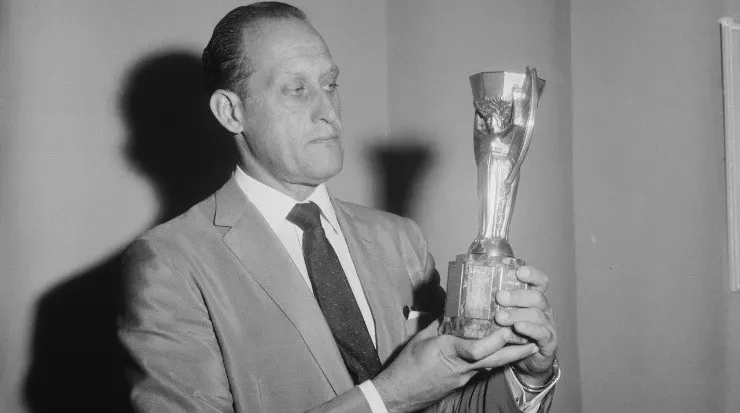
CBF president, Joao Havelange, holds the Jules Rimet Trophy. ( Hogg/Express/Hulton Archive/Getty Images)
The loot was taken to Hernandez’sjewelry where it was cut into pieces and melted. According to the police’s research, the thieves sold the precious metal and obtained $15,500. The only member of the gang that was caught was the Argentinian jeweler, in 1998,thanks to a whistleblower originally to be includedin the plan by Peralta.
Almost one year after, the Kodak company ordered a replica of the stolen FIFA World Cup Trophy and donated it to the Brazilian Soccer Confederation, which had to learn from its own mistake of do not protect wellits treasure. Uruguayan El Pais‘sstory about this robbery even precise that the CBF had a replica of the Trophybetter protected in a chest than its original.
FIFA’s extreme security precautions to prevent more World Cup Trophythefts
Since these episodes happened, FIFA decided that its new version of the World Cup Trophy, firstly given to the World Cup winner in 1974, would never leave its headquarters in Zurich, Switzerland. So, the Qatar 2022 champion will receive a replica, as the twelve past winners of soccer’s main tournament.

The two editions of the FIFA World Cup Trophy. (Xavier Laine/Handout/Julien’s Auctions via Getty Images)
